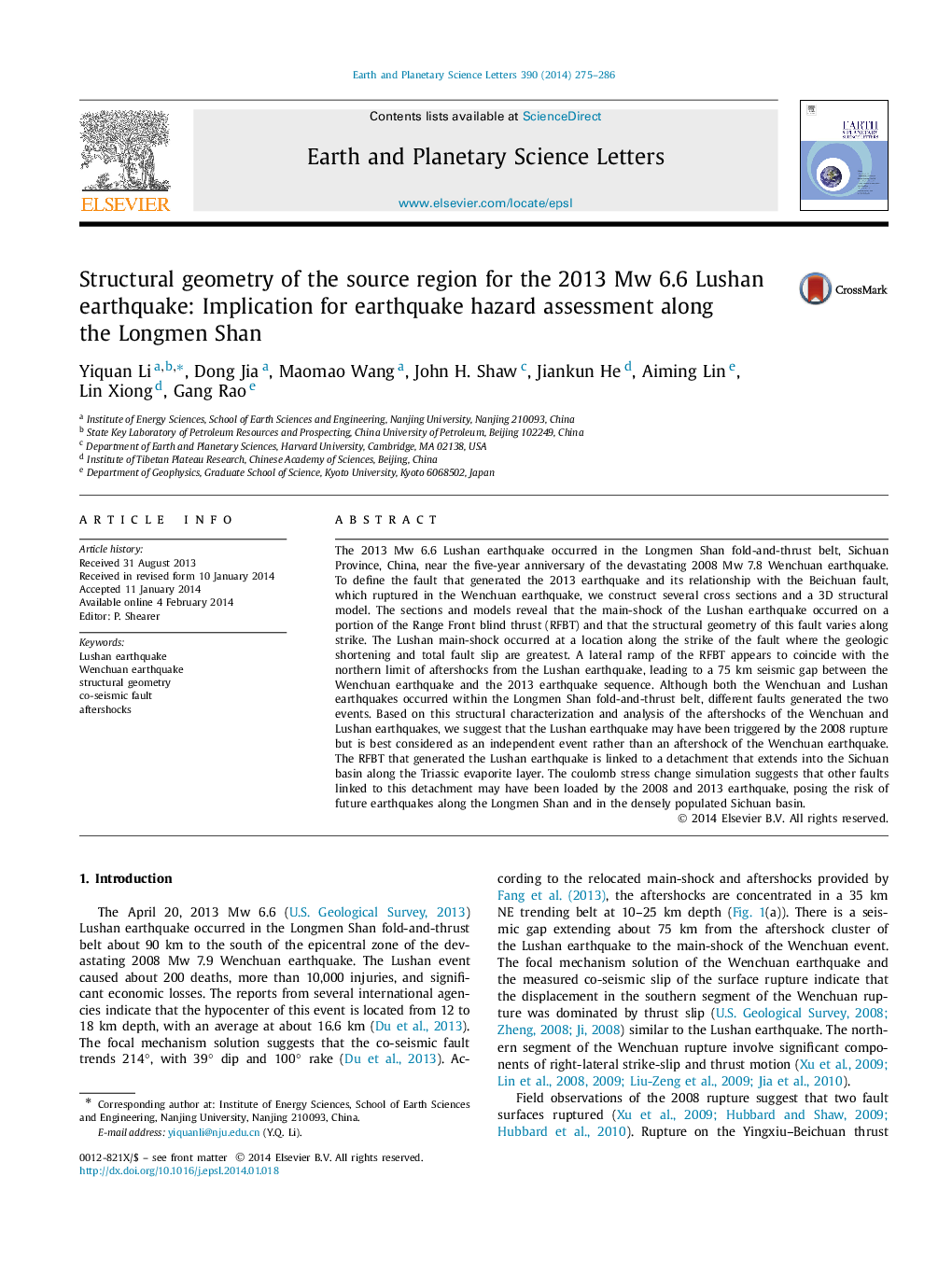| کد مقاله | کد نشریه | سال انتشار | مقاله انگلیسی | نسخه تمام متن |
|---|---|---|---|---|
| 6429614 | 1634766 | 2014 | 12 صفحه PDF | دانلود رایگان |
- The Range Front blind thrust (RFBT) sourced the 2013 Lushan earthquake.
- The northern limit of the rupture was controlled by a lateral ramp.
- 3D geometry of the source faults of Lushan and Wenchuan earthquake is constructed.
- The RFBT extends beneath the whole Longmen Shan and is confirmed to be active.
- The faults linked with the RFBT likely represent a significant seismic hazard.
The 2013 Mw 6.6 Lushan earthquake occurred in the Longmen Shan fold-and-thrust belt, Sichuan Province, China, near the five-year anniversary of the devastating 2008 Mw 7.8 Wenchuan earthquake. To define the fault that generated the 2013 earthquake and its relationship with the Beichuan fault, which ruptured in the Wenchuan earthquake, we construct several cross sections and a 3D structural model. The sections and models reveal that the main-shock of the Lushan earthquake occurred on a portion of the Range Front blind thrust (RFBT) and that the structural geometry of this fault varies along strike. The Lushan main-shock occurred at a location along the strike of the fault where the geologic shortening and total fault slip are greatest. A lateral ramp of the RFBT appears to coincide with the northern limit of aftershocks from the Lushan earthquake, leading to a 75 km seismic gap between the Wenchuan earthquake and the 2013 earthquake sequence. Although both the Wenchuan and Lushan earthquakes occurred within the Longmen Shan fold-and-thrust belt, different faults generated the two events. Based on this structural characterization and analysis of the aftershocks of the Wenchuan and Lushan earthquakes, we suggest that the Lushan earthquake may have been triggered by the 2008 rupture but is best considered as an independent event rather than an aftershock of the Wenchuan earthquake. The RFBT that generated the Lushan earthquake is linked to a detachment that extends into the Sichuan basin along the Triassic evaporite layer. The coulomb stress change simulation suggests that other faults linked to this detachment may have been loaded by the 2008 and 2013 earthquake, posing the risk of future earthquakes along the Longmen Shan and in the densely populated Sichuan basin.
Journal: Earth and Planetary Science Letters - Volume 390, 15 March 2014, Pages 275-286
